When we left Barcelona the heat had subsided and we were experiencing the comfort of temperatures in the mid 20s’, not mid 30s’.
It was still warm and humid but a lot more bearable.
When we arrived in San Sebastian, only 570km north, everything was very different.
Autumn had arrived.
The temperature had dropped 10 degrees, the skies were overcast and it was raining. This was something we hand’t experienced in 4 months.
We were on the road to England through North East Spain and France, so I guess this was to be expected.
After San Sebastian we headed into the famous region of Bordeaux. Apart from wine the area is also known for the city of Bordeaux, a beautifully preserved 18th Century, UNESCO World Heritage listed city.
Certainly not part of the UNESCO listing, but still interesting, is the remains of the German U-Boat pens in the old port area.
From the city of Bordeaux we made a slight detour east, to Saint Emilion. The vines were changing colour and the grapes were plump, ripe and ready to pick.
The next few days were spent touring around Brittany, visiting some of the famous French Chateaus like Trécesson, Josselin, Kergrist and Tonquédec. On the way we also discovered some interesting ancient churches like the Chapel at St Cado and the Parish Close at Guimiliau as well as the Enchanted Forest at Huelgoat.
The current chapel in Saint Cado was built in the 12th century on the site of the original Romanesque church built by Saint Cado.
Saint Cado was a Welsh monk and a prince of Glamorgant who came to Brittany in the 6th century. He later returned to Wales where he was martyred.
Its not surprising then that many place names around this area sound decidedly Welsh.
The Parish Close at Guimiliau, dating from the 16th and 17th centuries, a is an elaborately decorated church surrounded by walled churchyard.
Apart from the historical wonders of Brittany and Normandy, there is one geographic peculiarity that make this area unique.
Massive tides play an important role in day to day life and have also had a big influence on the regions architecture, especially the ancient fortifications around Saint Malo.
At the end of the 17th Century, Louis XIV commissioned the famous military engineer, Marechel de Vauban, to strengthen the defenses around Saint Marlo. Vauban cleverly used the topography of the many tidal islands to build a series of fortifications.
And Saint Malo certainly needed defending as it was the main port of the Bretton Corsairs, who continually plundered British ships as they sailed into the English ports, laden with riches from the East.
In fact there was so much wealth in Saint Malo that Louis borrowed money from these Corsairs to pay for some of his exploits.
In more recent history, 80% of Saint Malo was destroyed during WW2 but has been painstakingly rebuilt. A walk around the 2.5km of ramparts gives you a wonderful appreciation of this wealthy pirate town.
These super tides have also had a big influence on another of the region’s landmarks, the famous island of Mont Saint Michel.
Another UNESCO Word Heritage site, Mont Saint Michel was at risk of losing its status as an island. Heavy silting from the damming of the canal, that was built at the end of the eighteen hundreds, had reduced the distance from the mainland to the island, from 1.5km to just a few meters.
Started in 2010 and due for completion in 2015, there is now a massive engineering project underway to restore the surrounding waterways.
The car park and causeway will be removed and a low profile bridge built, that will link the island to the mainland. Mega tones of silt will be trucked away, allowing the sea to surround Mont Saint Michel once again.
As impressive as the Abbey and the surrounding town is, the real feature of Mont Saint Michel is the way it dominates the landscape from many kilometers away.
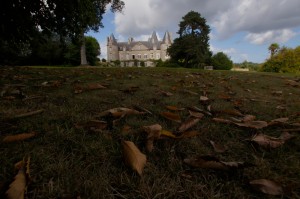
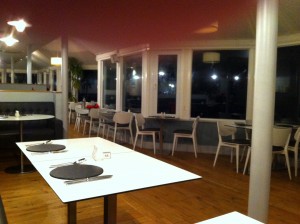
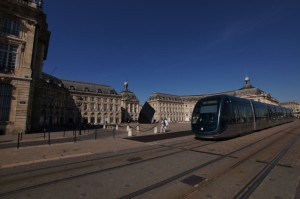
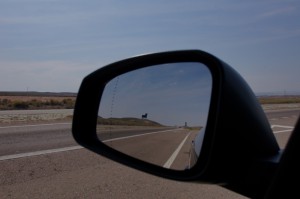
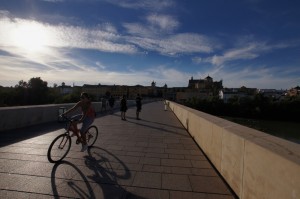










Vodafone.
Tuesday, September 4th, 2012We cancelled our contract with Vodafone in Australia because of their poor performance and inability to deliver on their promises.
Vodafone consistently spend large media dollars in hyping up their services. They have adopted the approach that if you continually promote a fallacy, it will become fact.
Their inability to deliver has lead to a class action in Australia and a mass exodus of their clients.
They have now suspended their considerable media spend, while they attempt to improve their coverage and services.
We stupidly selected Vodafone to purchase a broadband ‘Módem USB Stick’ for coverage in Spain.
Apparently this corporate leopard doesn’t easily change its spots.
The connection was poor and there were problems in recharging our account online.
So much so that we had to drive back to where we purchased the key and get it manually recharged there.
Their explanation was that the online service wasn’t working today but would be ok, ‘mañana’.
It still isn’t working.
Marketing works well when the delivery lives up to the promise.
Vodafone in Spain are following the Australian or more possibly the international strategy of promise first then try and deliver later.
Advertising will only work when it’s based on truth, anything else is phoney.
Posted in Advertising, Comment, Grumbling, Marketing | 1 Comment »